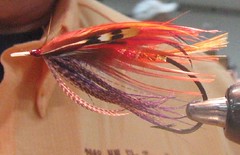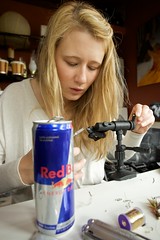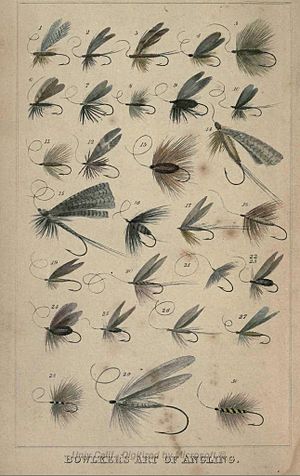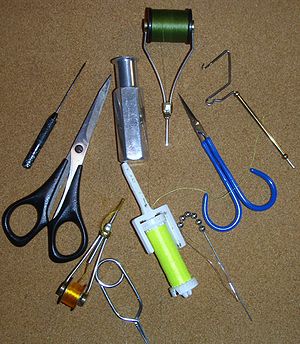 Image via Wikipedia
Image via Wikipedia Image via WikipediaJust as with any other sport, the equipment you use when fly fishing can be very important. There are various types of equipment that you need when you undertake fly fishing, and be prepared because some of it can get quite expensive!
Image via WikipediaJust as with any other sport, the equipment you use when fly fishing can be very important. There are various types of equipment that you need when you undertake fly fishing, and be prepared because some of it can get quite expensive!Of course, you’ll need a rod and reel. What type of rod you choose depends on the type of fish you will be angling for. Fly rods are ranked according to their net weight capabilities (nwt). The nwt number will tell you what type of fish you will be able to catch. Fish that weigh 8 pounds will require at least an 8 nwt rod, etc. The larger the nwt number, the larger fish you can catch.
Some rods are multi-rated (e.g. 7-9 nwt). These rods are good to use because they can accommodate a variety of fish, but multi-rated rods tend to be less flexible than single rated rods.
Rods are made of fiberglass, graphite, or bamboo. Fiberglass rods are durable and less expensive. Fiberglass rods are best for beginning fly fishermen because they can be used in a variety of situations. Graphite rods are lighter and will give you more fighting weight when it comes to landing a fish. Bamboo rods can be expensive, but they are extremely strong and are suited to a more laid-back casting style.
Your fly line will need to match the nwt of your rod. If you have an 8 nwt rod, you’ll need to use an 8 nwt line. It is acceptable to go one or two sizes above or below your rod weight (i.e. 9 nwt or 7 nwt). Buy line that is strong and durable. Some lines are specially designed for freshwater, saltwater, etc.
You will also need to have a durable net that you can carry with you. After the fish has lost its will to fight, a good net is used to scoop them out of the water. This can be a big part of your fly fishing equipment because without a good net, you won’t be able to get your fish out of the water!
Having the right fly fishing equipment is important for both the beginner as well as the experienced angler. As you get better and better at the sport, you will begin to see how important having good equipment can be. You can always upgrade, so it’s good to start out small and work your way up to the more expensive stuff. Your fly fishing equipment can make a world of difference between landing that big fish or catching an ordinary one.












